Oracle Analytics delivers ongoing innovation through the year, and offers a wide range of AI capabilities. It provides users capabilities augmented with AI, Machine Learning, and Data Science, as well as leveraging Oracle Cloud Infrastructure (OCI) integrated AI Services.
Oracle Analytics offers 3 types of AI capabilities:
- Built-in, AI-augmented capabilities.
- Integrated ML capabilities.
- Integrated AI capabilities.
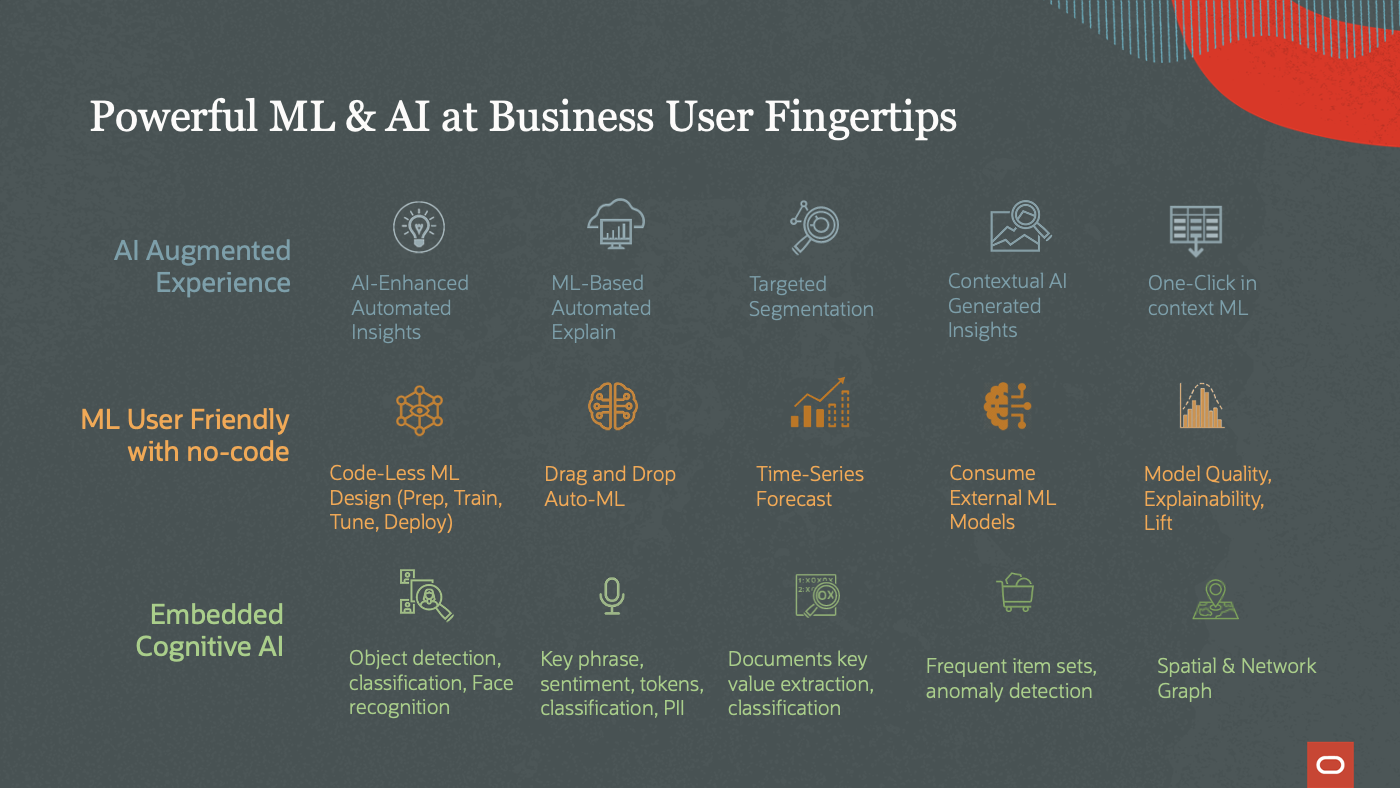
Here’s a list to help you discover some of the key AI features for Oracle Analytics:
Built-in AI Augmented capabilities
AI Auto-Insights: This feature generates data visualizations automatically from a specific dataset. It will create an optimal visualization for the data elements selected.
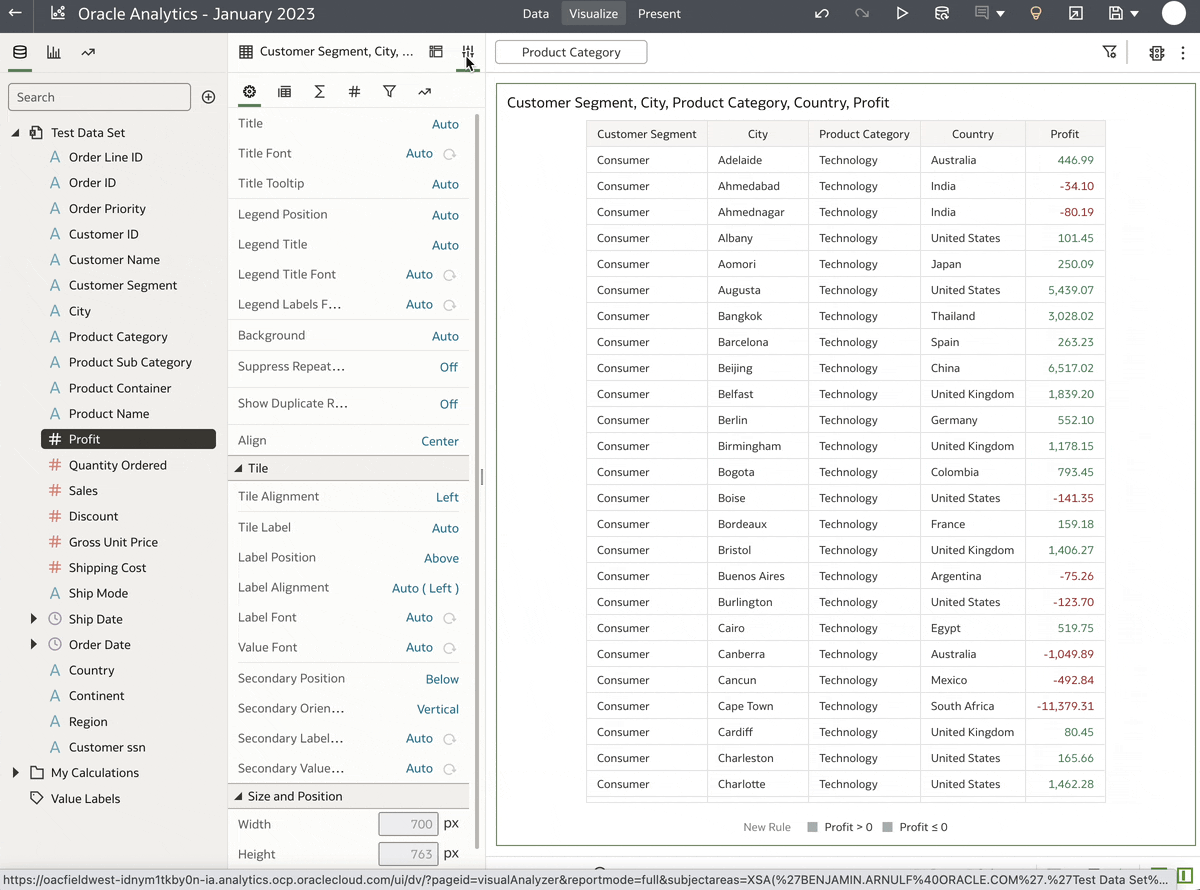
Explain: This feature uses Machine Learning to automatically explain a metric or attribute – like “Attrition” in the example below – with a single click. It calculates the correlations, drivers, segmentations and anomalies for the dataset.
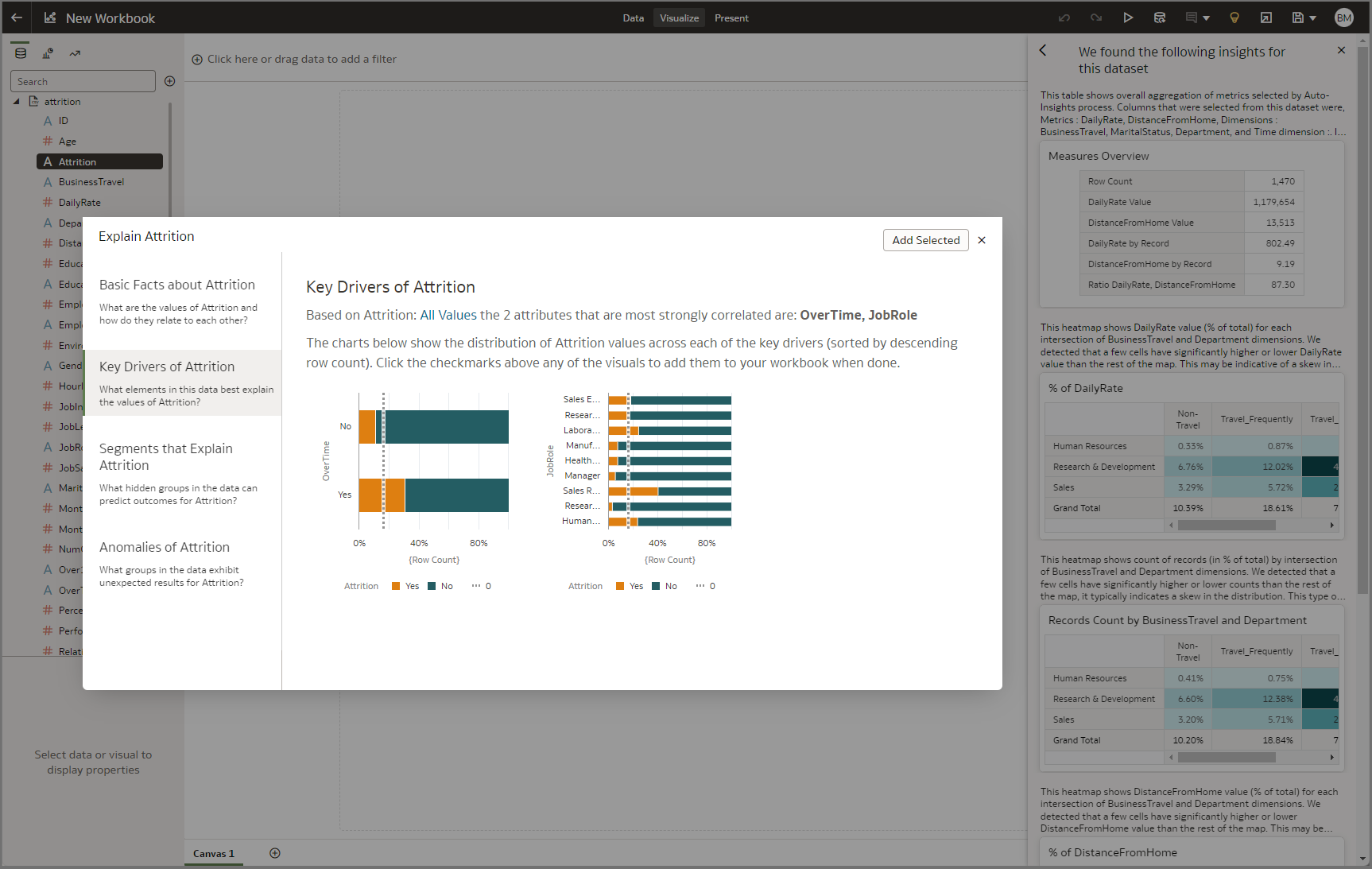
1-Click ML/AI feature: this feature enables you to create statistics and ML-generated insights, like clustering with ML or forecasting, using algorithms like ARIMA or ETS with a single click.
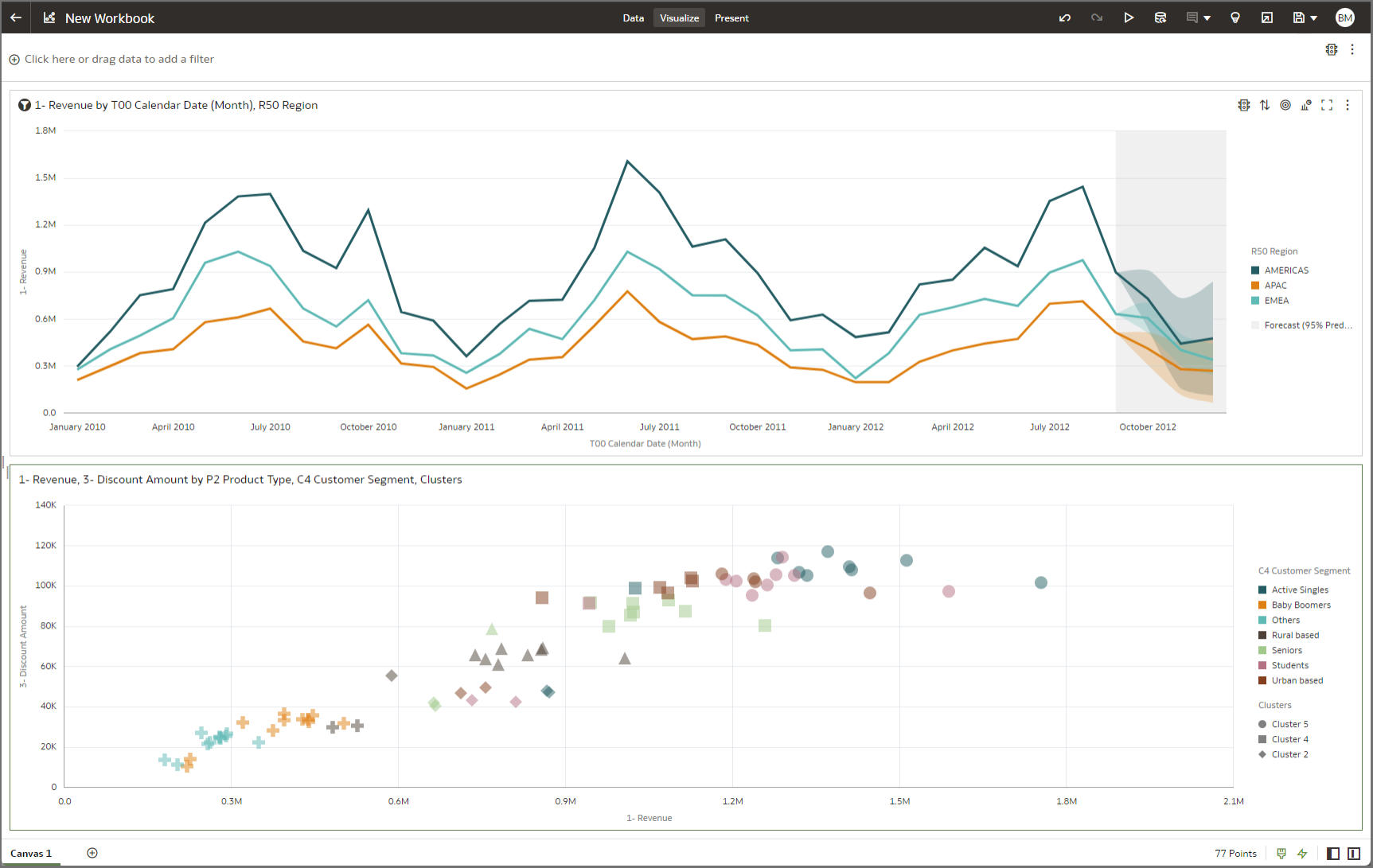
ML Integrated Capabilities
Drag and Drop ML and Data Science: this feature allows you to train models using numeric prediction, multi-classifier, binary classifier, or clustering with different built-in algorithms. These ML algorithms can be customized, trained, tuned, and then published to the wider analytics user community.
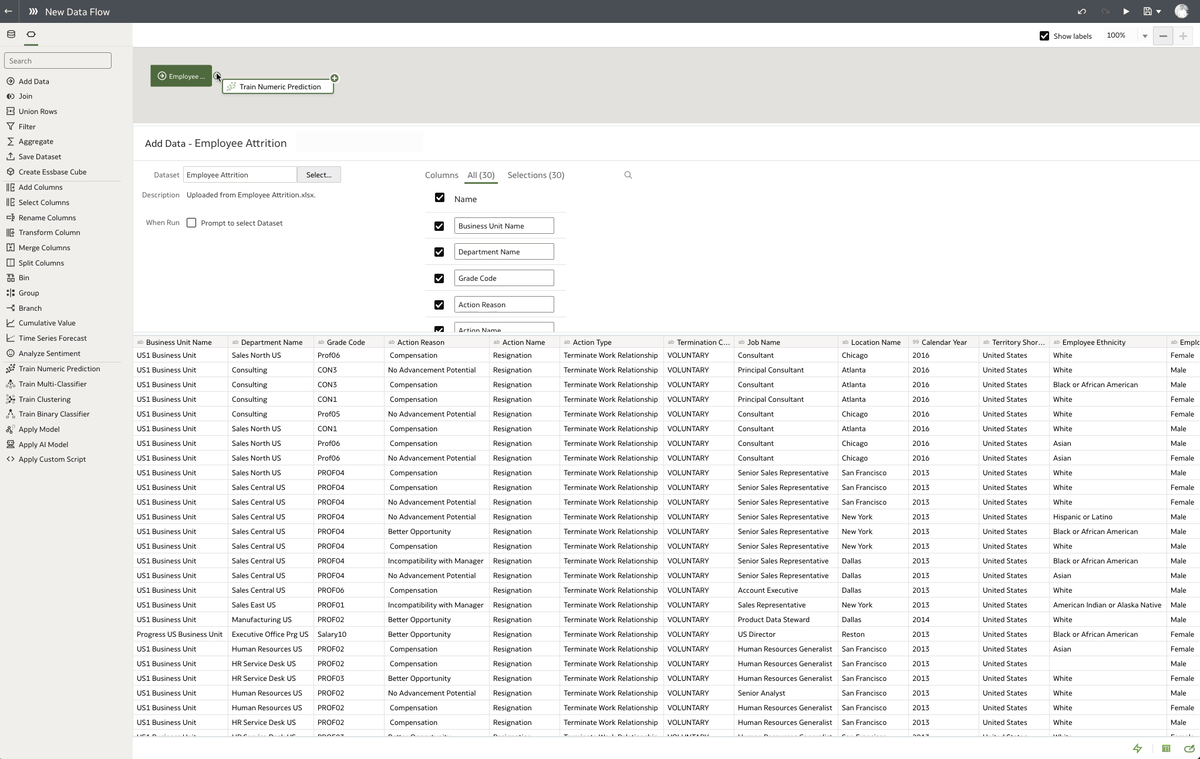
Integrated AI capabilities
Oracle Cloud offers multiple AI services: https://www.oracle.com/artificial-intelligence/ai-services/
Currently, Oracle Analytics is integrated with 3 of them and more are planned in our Product Roadmap. Integration means that you can create an AI service in OCI, register the AI model, and ingest the results into Oracle Analytics as a dataset to create visual data stories.
Below are some key OCI AI services currently integrated with Oracle Analytics:
- AI Vision
- AI Language
- AI Document Understanding
Below you can review these AI services and discover data visualizations built using them.
AI Vision Integration
AI Vision provides Object Detection and Image Classification. There are live demos for each in the public OAC instance.
A blog and demo showing object detection is available here:
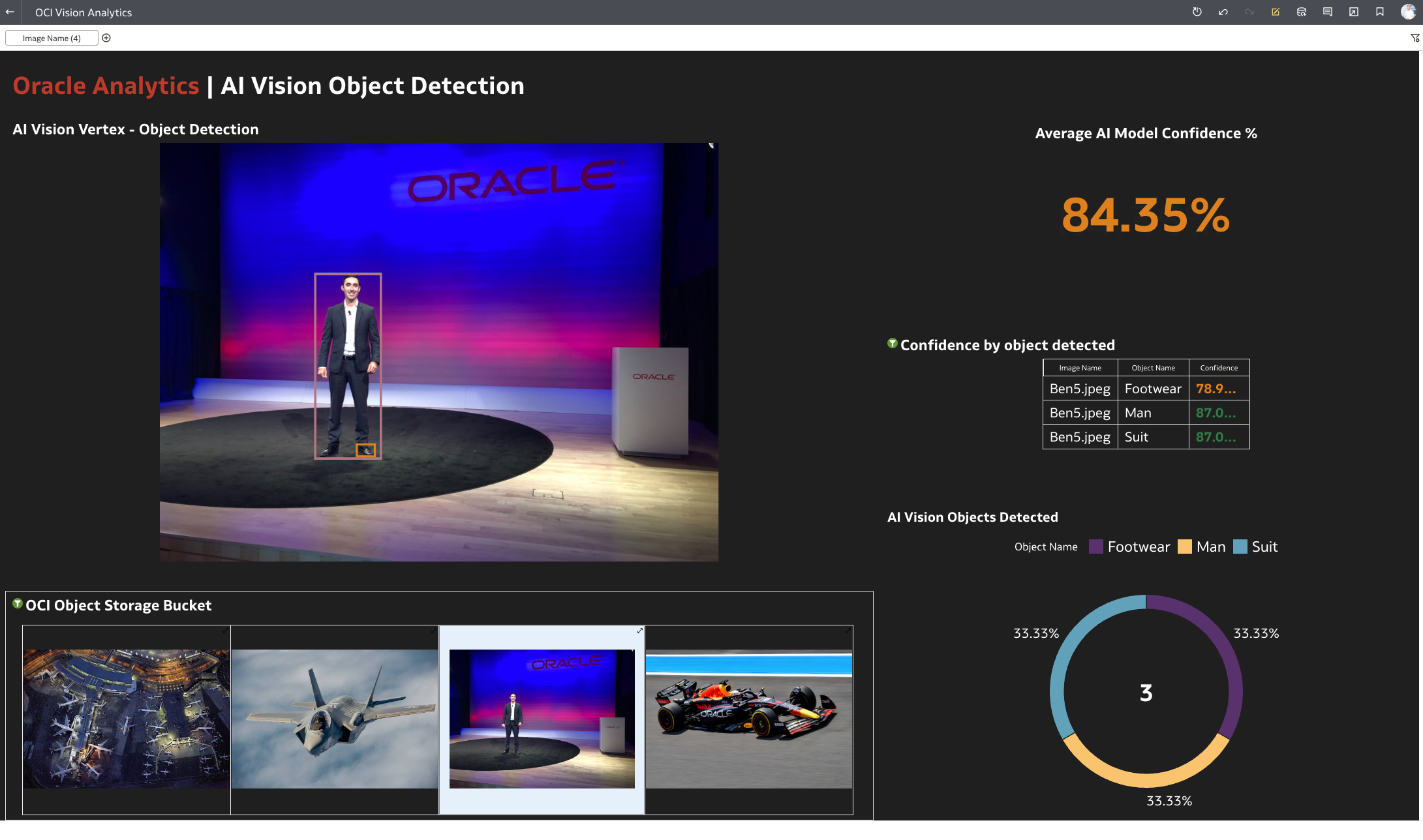
A blog and demo showing image classification is available here:
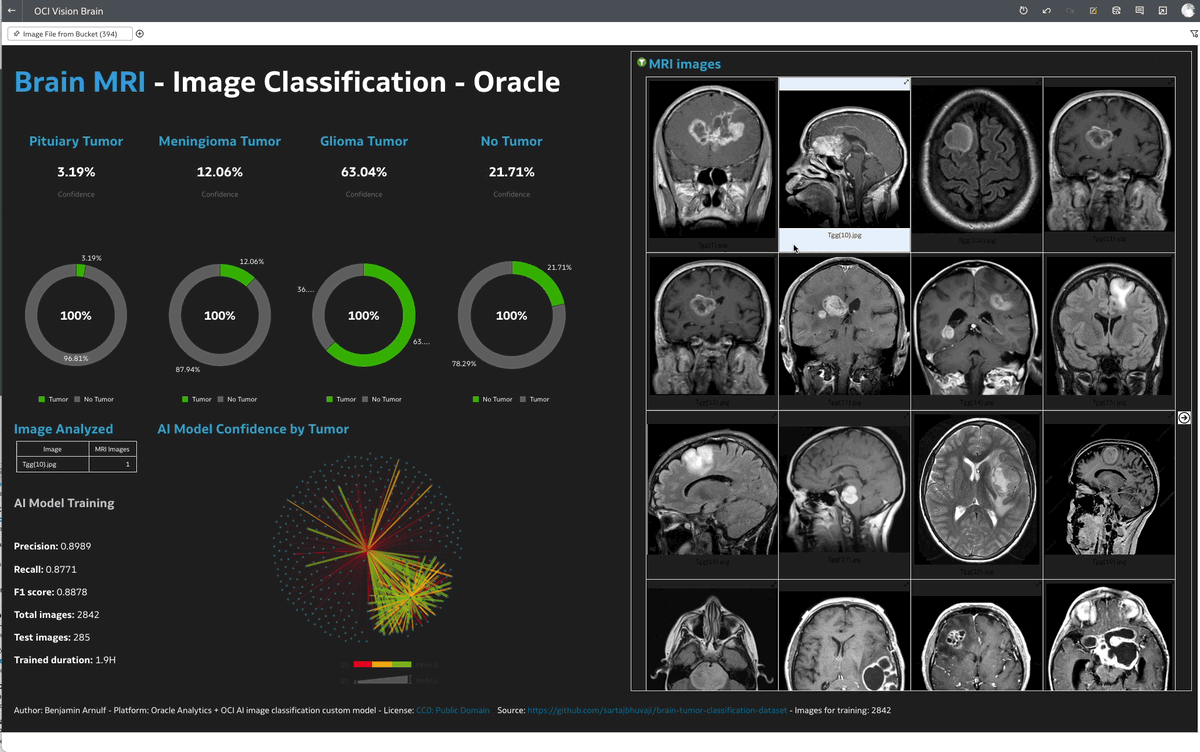
AI language Integration
Oracle Analytics has the capability to analyze language using AI:
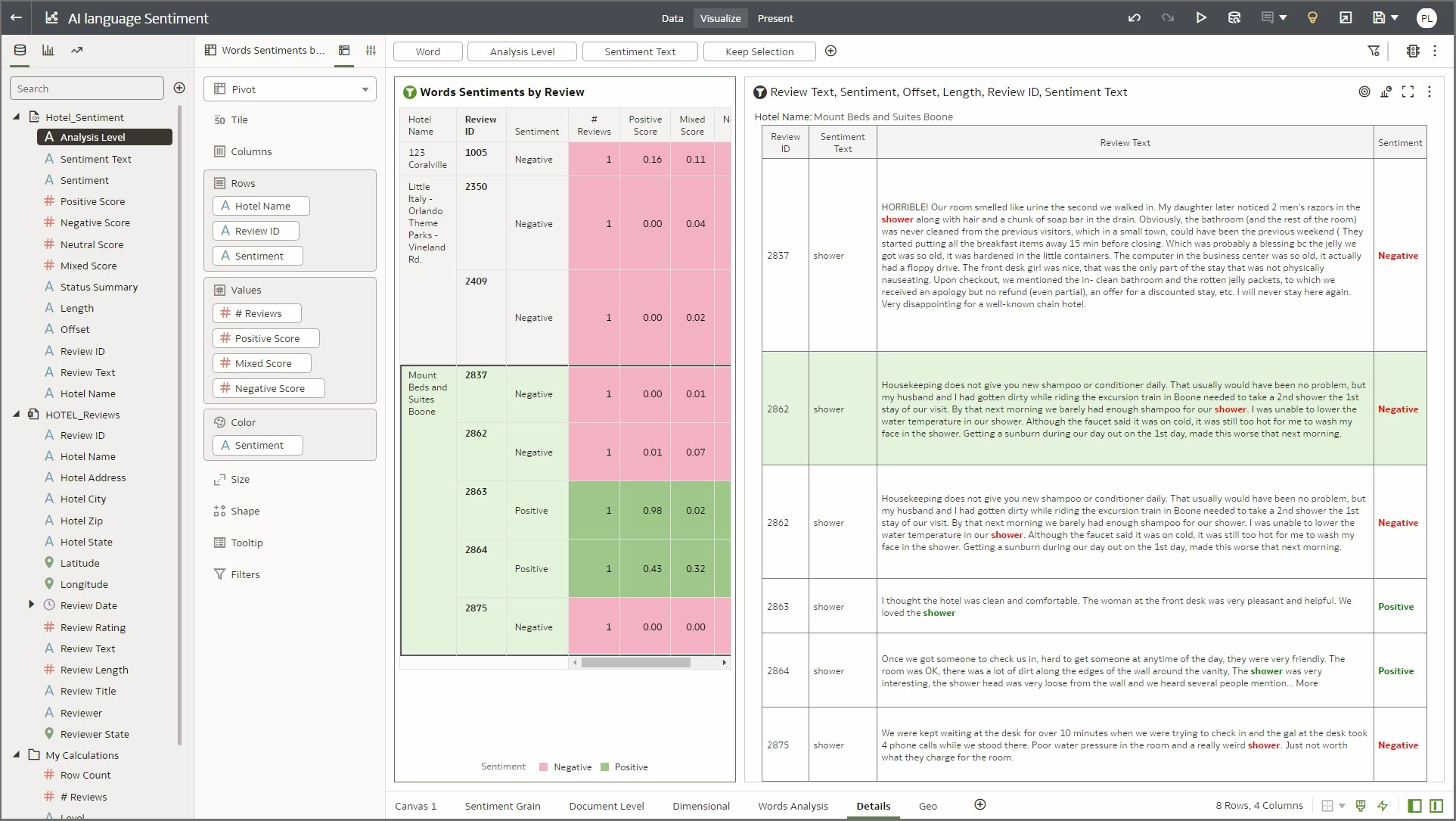
AI Document Understanding
Oracle Analytics is integrated with OCI AI Document Understanding and can recognize and extract values from a passport, receipts, resumes (aka CVs), invoices and more. See a blog and demo below:
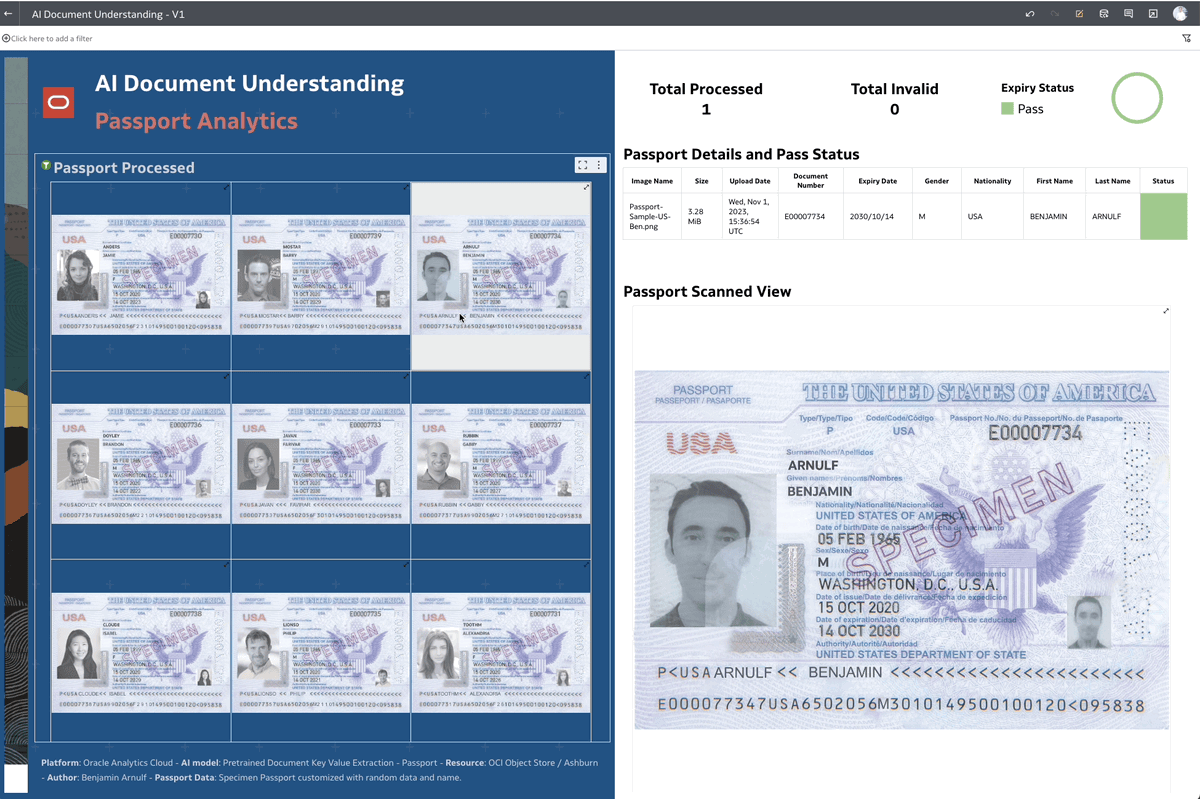
AI Digital Assistant
This will be integrated into Oracle Analytics, as announced at the keynote of T.K. Anand at OCW23. In summary, you will be able to ask questions like “What is the root cause for attrition and the trend for the past 3 quarters?”, and the integration will leverage Cohere or other Large Language Models (LLM) to create an answer and generate relevant data visualizations.
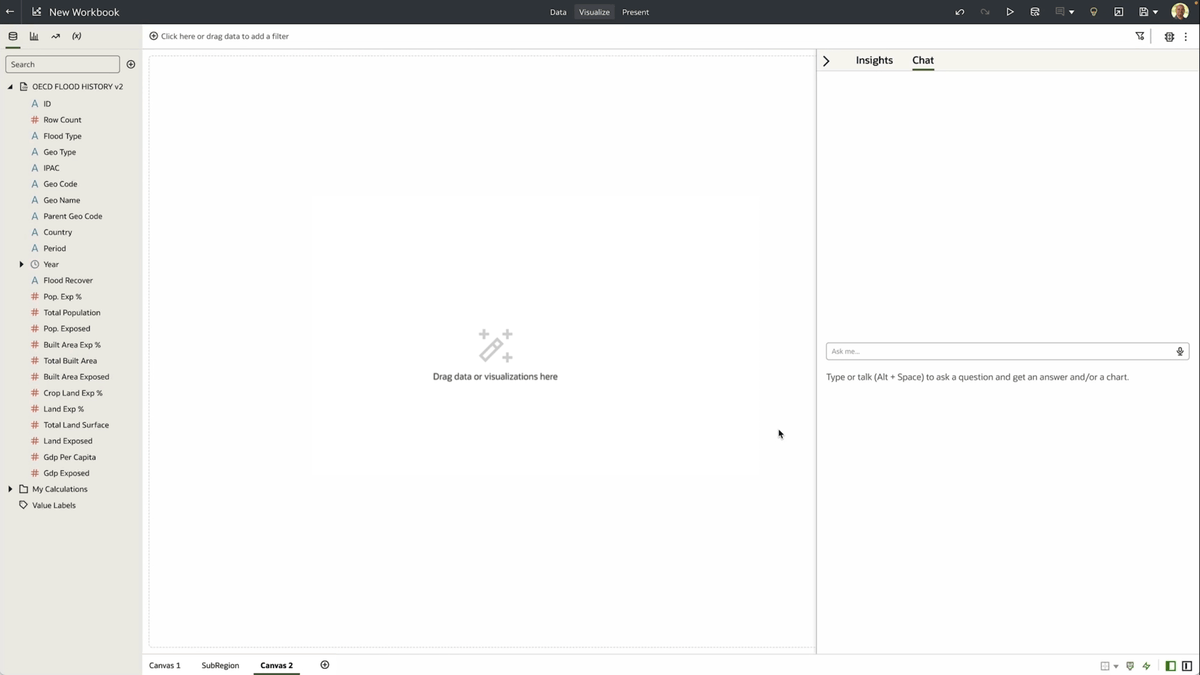
Conclusion
Oracle Analytics was one of the earliest analytics solutions to include machine learning, natural language processing, and AI capabilities – and continues to incorporate new technology as the field grows. Take a look at these resources to find out more about how AI and Machine Learning can help your organization make the most of your data:
- For more information about Oracle Analytics, go to https://www.oracle.com/business-analytics/
- For more information on OAC’s built-in AI and ML capabilities, go to https://www.oracle.com/business-analytics/analytics-platform/capabilities/ai-ml/
- For more information about Oracle AI, go to https://www.oracle.com/artificial-intelligence/
- For documentation, visit the Oracle Help Center.


